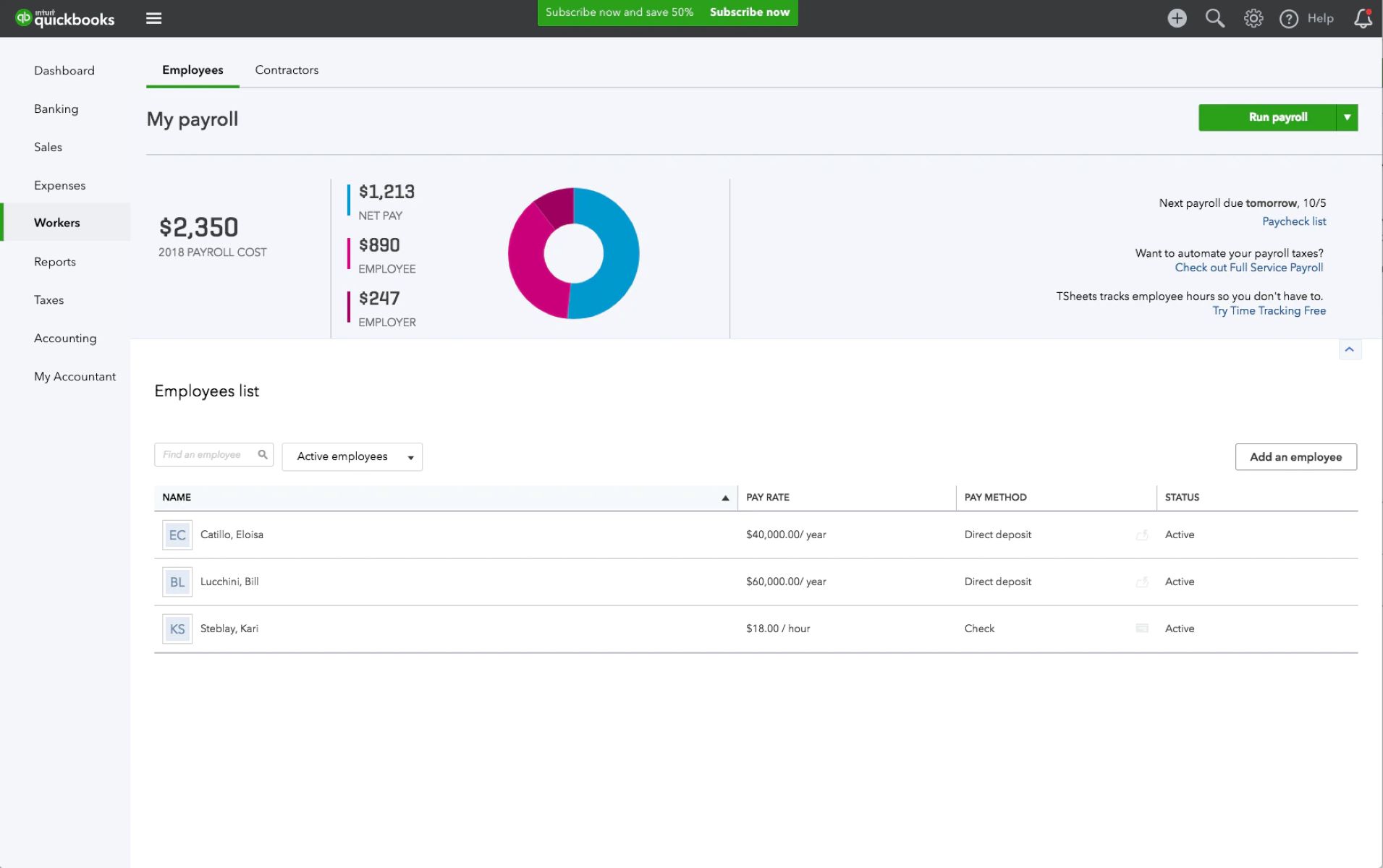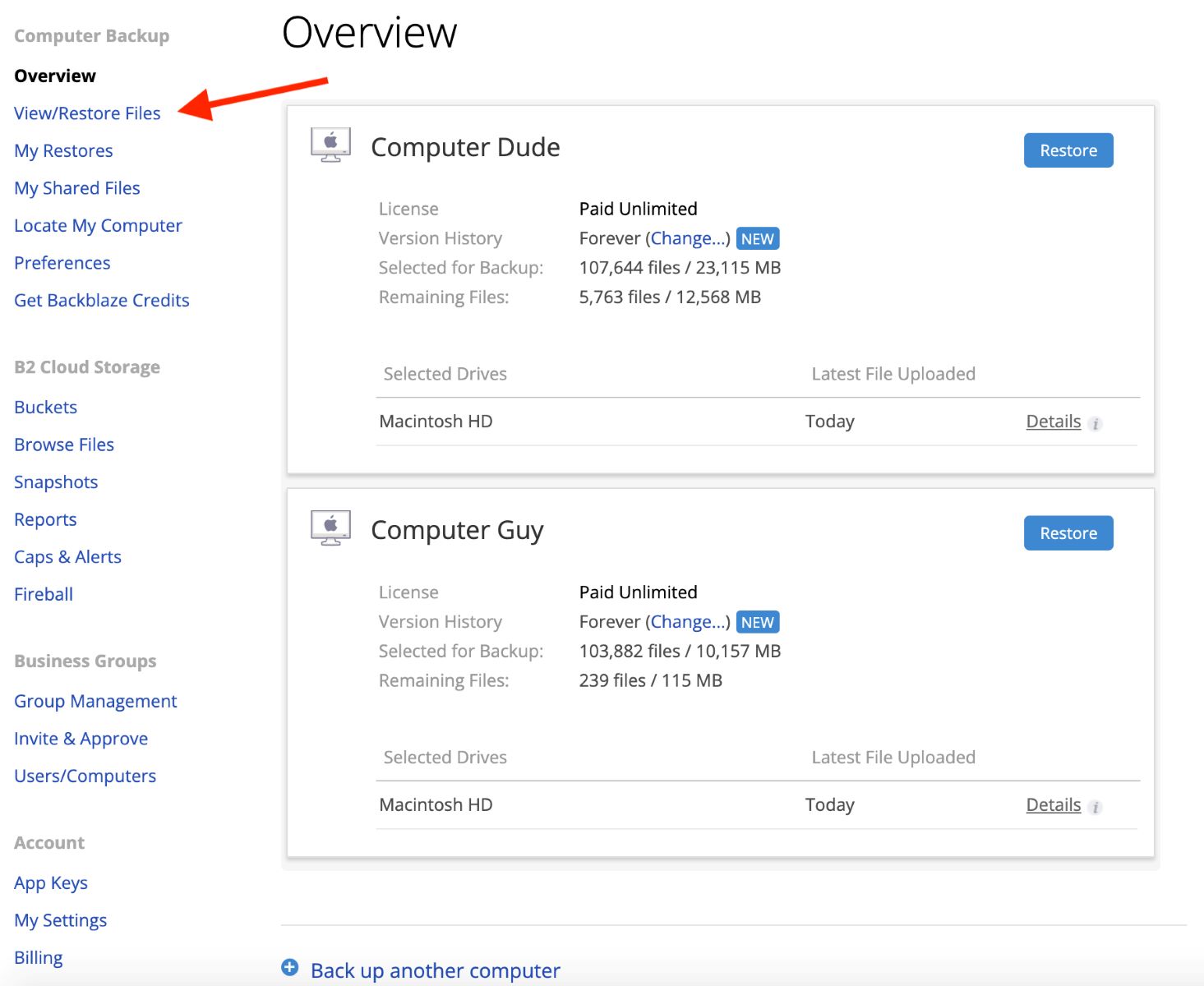Introduction
Welcome to the world of QuickBooks! If you’re a small business owner or an accounting professional, you’re probably no stranger to the name. QuickBooks is an accounting software developed by Intuit, designed to help businesses manage their finances more efficiently. With its user-friendly interface, powerful features, and robust functionality, QuickBooks has become the go-to choice for millions of individuals and organizations around the world.
In this article, we will guide you through the process of downloading QuickBooks, ensuring that you have the software up and running in no time. Whether you’re a first-time user or someone looking to upgrade to the latest version, our step-by-step instructions will help you navigate the download process seamlessly.
Before we dive into the details, it’s important to note that QuickBooks comes in different versions and editions, tailored to specific business needs. Whether you’re looking for a basic accounting tool to track income and expenses or a full-fledged business management software with advanced features, QuickBooks has got you covered.
Throughout this guide, we will provide you with valuable insights on choosing the right version, creating an Intuit account, finding the download link, and successfully installing and activating QuickBooks. So, without further ado, let’s get started with the first step: determining the system requirements for QuickBooks.
System Requirements
Before you begin the download and installation process, it’s crucial to ensure that your computer meets the necessary system requirements for QuickBooks. This will help ensure a smooth and hassle-free experience with the software. Here are the basic system requirements:
- Operating System: QuickBooks is compatible with Windows 7 or later, or macOS 10.15 (Catalina) or later.
- Processor: For Windows, a 2.4 GHz processor or higher is recommended. For Mac, an Intel Core 2 Duo or higher processor is required.
- RAM: QuickBooks requires a minimum of 4 GB of RAM, although 8 GB is recommended for optimal performance.
- Hard Disk Space: You will need a minimum of 2.5 GB of free disk space to install QuickBooks.
- Screen Resolution: QuickBooks supports a minimum screen resolution of 1280×1024.
- Internet Connection: An internet connection is required for downloading and activating QuickBooks. A high-speed internet connection is recommended for optimal performance.
- Additional Requirements: QuickBooks also requires Adobe Acrobat Reader 9.0 or later for printing reports and checks.
Keep in mind that these are the minimum system requirements, and your computer’s performance may be affected if it falls short of these recommendations. It’s always a good idea to have a computer that exceeds these specifications to ensure smooth operation of QuickBooks and avoid any potential issues.
Now that you have verified that your computer meets the system requirements, let’s move on to the next step: choosing the right version of QuickBooks.
Step 1: Choose the Right Product
QuickBooks offers a range of products and editions to cater to different business needs. Before downloading QuickBooks, it’s essential to determine which product best suits your requirements. Here are the main product options you can choose from:
- QuickBooks Online: This cloud-based accounting software allows you to access your financial data anytime, anywhere. It is ideal for small businesses that need flexibility and collaboration with multiple users.
- QuickBooks Desktop: If you prefer having your accounting software installed directly on your computer, QuickBooks Desktop is the right choice for you. It offers more advanced features and is better suited for medium-sized businesses or those with complex accounting needs.
- QuickBooks Self-Employed: Specifically designed for freelancers and independent contractors, this version simplifies expense tracking, invoicing, and tax calculations.
Once you have decided on the product type, you will need to select the appropriate edition based on the features and capabilities you require. QuickBooks Desktop, for example, offers three editions: Pro, Premier, and Enterprise, each with different functionalities and pricing options.
We recommend visiting the official QuickBooks website to explore the features and compare the various products and editions. This will help you make an informed decision based on your business needs and budget.
After selecting the product and edition, you’re ready to proceed to the next step: creating an Intuit account. This account will provide you with access to download and manage your QuickBooks software, as well as access online resources and support.
Step 2: Create an Intuit Account
Before you can download QuickBooks, you’ll need to create an Intuit account. This account will serve as your central hub for managing your QuickBooks software, licenses, and support. Follow the steps below to create your Intuit account:
- Visit the official QuickBooks website.
- Click on the “Sign In” or “Get Started” button, usually located at the top right corner of the page.
- On the login page, click on the “Create an account” or “Sign Up” option.
- Enter your personal information, including your name, email address, phone number, and desired password.
- Review and agree to the terms and conditions, then click “Create Account” or a similar button to complete the registration process.
- Check your email inbox for a verification email from Intuit. Click on the verification link to confirm your account.
Once you have created your Intuit account and verified your email address, you are now ready to move forward with the next step: logging in to your Intuit account.
Having an Intuit account not only allows you to download QuickBooks, but it also gives you access to other Intuit products and services. It provides a centralized platform where you can manage your profile, billing information, and software subscriptions.
Now that you have created and verified your Intuit account, it’s time to log in and proceed to the next step of the download process.
Step 3: Login to Your Intuit Account
After creating your Intuit account, the next step is to log in to your account. By logging in, you will have access to download QuickBooks and manage your software. Follow these steps to log in to your Intuit account:
- Visit the official QuickBooks website.
- Click on the “Sign In” button, usually located at the top right corner of the page.
- Enter the email address and password associated with your Intuit account.
- Click on the “Sign In” button to proceed.
If you encounter any issues logging in, make sure to double-check the email and password you entered. If you have forgotten your password, use the “Forgot password?” link to initiate a password reset process.
Once you have successfully logged in to your Intuit account, you will have access to various account management options. You can view and manage your QuickBooks subscriptions, update your billing information, and access support and resources from within your account.
Now that you are logged in, it’s time to move on to the next step: finding the download link for QuickBooks.
Step 4: Find the Download Link
Once you have logged in to your Intuit account, locating the download link for QuickBooks is the next step. Follow these steps to find the download link:
- From your account dashboard, navigate to the “Downloads” section or a similar tab.
- Look for the specific QuickBooks product and edition you have chosen.
- Click on the “Download” button or link next to the desired product.
Make sure to select the correct version and edition of QuickBooks that matches your business needs. If you are not sure, refer to your earlier decisions on product and edition selection or consult with a QuickBooks representative for guidance.
Before initiating the download, it’s a good practice to review any additional system requirements or compatibility information provided on the download page. This will ensure that you are downloading the right version of QuickBooks for your operating system.
After locating the download link and confirming the details, you are ready to proceed to the next step: choosing the correct version and edition of QuickBooks.
Note: The location and appearance of the download link may vary depending on the specific version of QuickBooks you have selected. If you encounter any difficulties finding the download link, consult the QuickBooks support documentation or contact their customer support for assistance.
Step 5: Choose the Correct Version and Edition
Choosing the correct version and edition of QuickBooks is essential to ensure that you have the right features and functionality for your business. Follow these steps to select the appropriate version and edition:
- Review the available options for QuickBooks versions, such as QuickBooks Online and QuickBooks Desktop.
- Determine which version aligns with your business needs, taking into account factors like accessibility, collaboration, and advanced features.
- Next, consider the various editions available within the chosen version. For QuickBooks Desktop, the editions could be Pro, Premier, or Enterprise, each offering different features and pricing structures.
- Evaluate the features and capabilities of each edition to identify the one that best suits your business requirements.
- Take into consideration factors like the number of users, inventory management, industry-specific features, and advanced reporting options.
- Once you have made your decision, make sure to select the correct version and edition while downloading QuickBooks.
It’s important to thoroughly research and understand the differences between the available versions and editions to make an informed decision. Consider reaching out to QuickBooks representatives or consulting with an accounting professional if you need further guidance in selecting the right version and edition.
Now that you have chosen the appropriate version and edition, it’s time to proceed to the next step: starting the download process for QuickBooks.
Note: The options for versions and editions may vary depending on your location and the specific pricing and availability in your region.
Step 6: Start the Download
Now that you have chosen the correct version and edition of QuickBooks, it’s time to initiate the download process. Follow these steps to start the download:
- Click on the download link or button for the chosen QuickBooks version and edition.
- A file download prompt may appear. Choose a location on your computer where you want to save the installer file.
- Click “Save” or “OK” to begin the download. The size of the download will vary depending on the selected version and edition.
- Depending on your internet connection speed, the download may take a few minutes. Please be patient during this process.
- Once the download is complete, locate the installer file on your computer. The file should have a recognizable name related to QuickBooks.
It’s important to note that the download time may vary depending on your internet connection speed and the size of the installer file. It’s recommended to use a stable internet connection to avoid any interruptions in the download process.
Ensure that you download QuickBooks from a reliable source, such as the official QuickBooks website or authorized resellers. This will help ensure that you have a genuine and secure copy of the software.
With the download complete and the installer file ready, you are now ready to proceed to the next step: installing QuickBooks on your computer.
Step 7: Install QuickBooks
Once you’ve downloaded the QuickBooks installer file, it’s time to proceed with the installation process. Follow the steps below to install QuickBooks on your computer:
- Locate the QuickBooks installer file on your computer.
- Double-click on the installer file to launch the installation wizard.
- Read and review the terms and conditions of the software. If you agree, select the checkbox to indicate your acceptance.
- Click on the “Next” or “Continue” button to proceed.
- Select the installation location for QuickBooks. The default location is usually recommended, but you can choose a different directory if desired.
- Choose whether you want to install QuickBooks for all users on the computer or only for the current user. Select the appropriate option and click “Next” or “Continue”.
- Review the installation settings, such as the application folder and additional components. If everything looks correct, click “Install” to begin the installation process.
- Wait for the installation process to complete. This may take a few minutes, so please be patient.
- Once the installation is finished, you will be prompted to enter your QuickBooks license and product information. Follow the on-screen instructions to complete the activation process.
It’s important to ensure that you enter the correct information during the activation process to avoid any issues with the software. Keep your QuickBooks license and product details handy, as you will need them for the activation.
After successfully installing and activating QuickBooks, you are ready to start using the software for your business accounting and financial management needs.
Congratulations! You have now completed the installation process for QuickBooks. The next step is to activate your QuickBooks software, so let’s move on to the final step.
Step 8: Activate QuickBooks
Once you have successfully installed QuickBooks on your computer, the final step is to activate the software. Activation verifies your license and allows you to start using QuickBooks for your business. Follow the steps below to activate QuickBooks:
- Launch QuickBooks by double-clicking on the desktop icon or accessing it from the Start menu.
- On the activation screen, you will be prompted to enter your license and product information. Locate this information in your QuickBooks documentation or email.
- Enter the license and product details accurately in the designated fields.
- Click on the “Activate” or “Continue” button to initiate the activation process.
- QuickBooks will connect to the activation server to verify and activate your license.
- If the license and product details are valid, QuickBooks will display a confirmation message that the activation was successful.
- Click “Finish” or “Close” to complete the activation process.
Once QuickBooks is activated, you will have full access to all the features and functionalities of the software based on the version and edition you have chosen.
It’s important to note that some editions of QuickBooks may require additional steps for activation, such as setting up multi-user access or integrating with other applications. Follow the prompts and instructions provided during the activation process to ensure you complete all necessary configurations.
Congratulations! You have now successfully installed and activated QuickBooks on your computer. You are ready to start managing your finances and accounting tasks with this powerful software tool.
Conclusion
Congratulations on completing the download and installation of QuickBooks! By following the step-by-step instructions provided in this guide, you have successfully set up the software and are now ready to streamline your business’s financial management. QuickBooks offers a range of features and functionalities to help you maintain accurate records, generate insightful reports, and simplify your accounting processes.
Remember, choosing the right version and edition of QuickBooks is crucial, as it will determine the specific features and capabilities available to you. Take the time to evaluate your business needs and explore the available options to ensure you select the most suitable version.
Creating an Intuit account is essential for accessing your software, managing your licenses, and benefiting from Intuit’s support and resources. Be sure to keep your account credentials secure and easily accessible.
Throughout the installation and activation process, pay attention to any additional system requirements or configuration steps specific to your chosen edition. Following these instructions will help you avoid any potential issues and ensure a smooth experience with QuickBooks.
Now that you have successfully installed and activated QuickBooks, take some time to explore the various features and functionalities. Familiarize yourself with its user interface and navigate through the different menus and options. QuickBooks offers extensive documentation and online resources to help you make the most of its capabilities.
Remember, if you encounter any difficulties or have specific questions, don’t hesitate to reach out to QuickBooks’ customer support or consult with an accounting professional. They can provide you with further guidance and assistance tailored to your unique business needs.
With QuickBooks ready to go, you can now efficiently manage your finances, track income and expenses, generate professional invoices, and gain valuable insights into your business’s financial health. Harness the power of QuickBooks to streamline your accounting processes and focus on what you do best: growing your business.

























